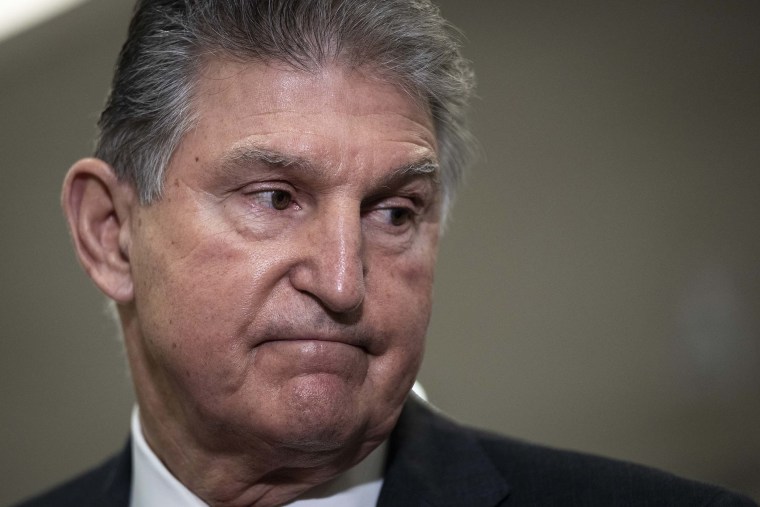After months of difficult negotiations over his Build Back Better agenda, President Joe Biden did not reference the legislative package by name in his State of the Union address.
But that doesn’t mean key elements of the plan went unmentioned.
In his speech to a joint session, the Democratic president specifically highlighted his proposals to help families pay for child care, affordable housing, and pre-K for 3- and 4-year-olds. In a message that appeared specifically directed at Sen. Joe Manchin — who’s played a prominent role in derailing the Build Back Better agenda — Biden also referenced deficit reduction, a priority for the conservative West Virginia Democrat.
Between the presidential rhetoric and his party’s behind-the-scenes efforts, the plan to keep at least some version of Build Back Better alive is obvious. The Hill reported that Manchin — who eyed a relatively ambitious package of his own as recently as December — doesn’t sound interested.
West Virginia Sen. Joe Manchin (D) poured cold water on President Biden’s attempt to revive the core elements of his Build Back Better agenda, questioning the president’s claim that passing a $1.5 trillion to $2 trillion spending package would “lower costs” for most Americans. “They just can’t help themselves,” Manchin quipped when asked by reporters after Biden’s State of the Union speech whether he was surprised by the president’s effort to try to use the moment to try to revive his stalled climate and social spending plan.
After telling reporters that “nothing’s changed on the legislative front, the West Virginian added, according to The Hill's report, “I’ve never found out that you can lower costs by spending more.”
It was a quote that apparently delighted Republican Sen. Mitt Romney, who chimed in, “You can’t say it better than that.”
For those wondering whether a Build Back Better package is still possible, Manchin’s rhetoric was hardly encouraging, and probably did not go unnoticed at the White House.
But the senator’s reaction was also flawed in a couple of ways.
At face value, Manchin’s pushback might have some common-sense appeal: It seems difficult to imagine spending more and saving more simultaneously.
But in practice, it’s not that simple. If Congress were to invest in affordable child care, for example, millions of American families would see their costs cut in a significant way. The government could spend more, and in turn, families could save more.
Ancillary benefits soon follow: Not only would the kids benefit, but their parents would find it easier to get back to work, which helps employers and generates tax revenue.
What’s more, the idea that policymakers can’t “lower costs by spending more” is belied by all sorts of examples. A government can invest in a bridge and lower costs by preventing flood damage. A government can invest in food safety inspections and lower costs by preventing consumers from getting sick. A government can invest in enforcing tax laws and lower costs by collecting from taxpayers what they owe. A government can invest in agencies such as the Securities and Exchange Commission and lower costs by not having to clean up financial catastrophes.
It’s possible, in other words, to spend and save at the same time. It just requires responsible decision making, not glib rhetoric.

